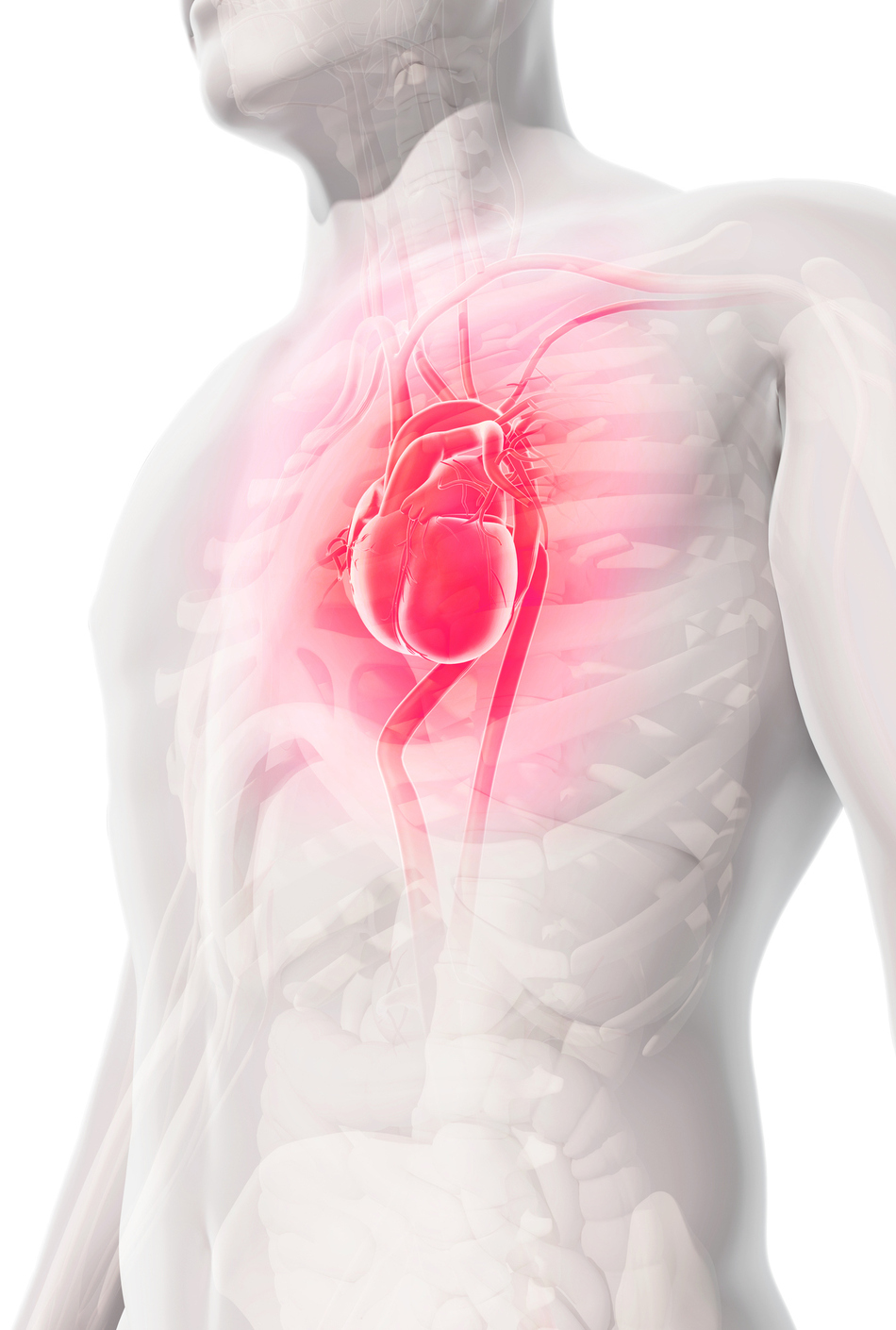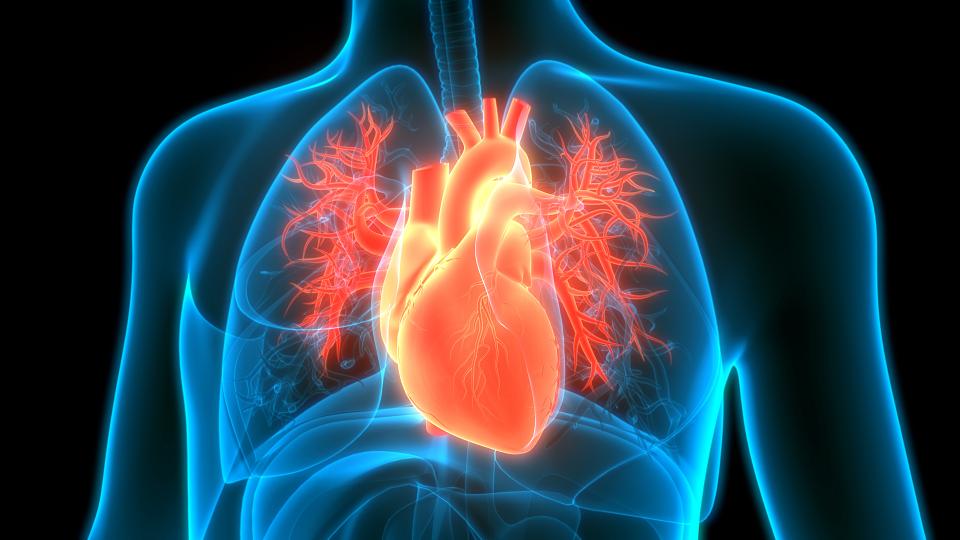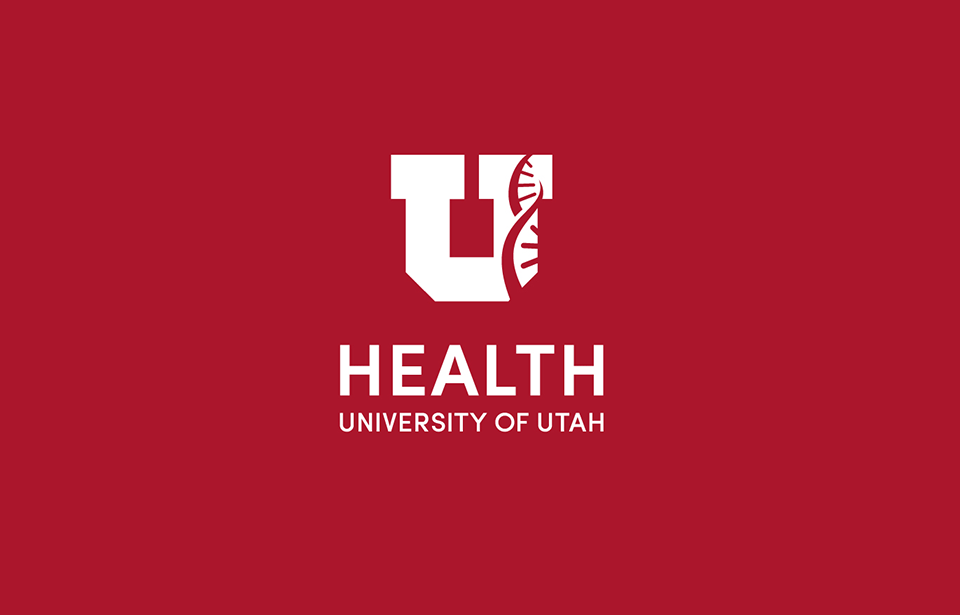
Interviewer: Coming up next on The Scope, learn more about a specialized clinic that treats just diseases of the aorta. That's next on The Scope.
Announcer: Health tips, medical news, research and more for a happier, healthier life. From University of Utah Health Sciences, this is The Scope.
Interviewer: Dr. Jason Glotzbach is a cardiothoracic surgeon, and Dr. Claire Griffin is a vascular surgeon, both at University of Utah Health, and they're both part of the Aortic Disease Program at University of Utah Health. And today I want to get a better understanding about that specialized clinic, why somebody might be referred there, and the advantage for the patient versus other options.
So, first of all, why is it necessary to have a clinic dedicated to the treatment of aortic disease?
What is the Aorta?
Dr. Griffin: So the aorta is one of the major blood vessels in the body, and any pathology associated with it can be very complex, and it's often not something that regular doctors have a lot of familiarity with. So our training gives us the opportunity to understand not just focused pathology in one particular area, but the whole aorta. And working together means that patients can come to one place and have a variety of opinions that really helps get the full scope of treatment options, natural history of the diseases associated with their aorta, and the full gamut of specialists to help take care of everything in one place.
Interviewer: So what I'm getting is it's a pretty complicated part of your anatomy and you need some pretty specialized people to take care of it?
Dr. Griffin: Yes.
What Does the Aorta Do?
Interviewer: Let's go back to anatomy class, Dr. Glotzbach. Where is the aorta? I know it's somewhere near the heart and it carries blood, but beyond that I don't remember much.
Dr. Glotzbach: Absolutely. That's a good place to start. The aorta is the largest artery in the body. It starts at the heart. So the aorta is the first stop of blood. As it leaves the heart, it goes into the aorta, and then from there it goes up and around the aorta and, through all of its branches, goes to every part of the body.
So the aorta is literally the kind of main superhighway for blood as it travels through our body. And so given that, obviously diseases of the aorta are very critical to the entire body, and so we have arteries in the chest, the abdomen, the legs, all that feeds off of the aorta.
Interviewer: Dr. Griffin, you'd mentioned that it takes, you know, a specialist to kind of understand this. In your general four years of med school, how much of this part of the body is really covered?
Dr. Griffin: So the understanding of most medical students coming out of medical school is probably exactly what Dr. Glotzbach just highlighted. It's the superhighway for blood, it's what takes blood everywhere else, but the understanding of the diseases that are in the aorta and how to treat them, and the thought process behind the approach to them is all something that is specialty training.
Individualized Treatment for Aortic Disease
Interviewer: And what's the advantage for the patient to come all the way to University of Utah Health, I mean, other than the experience part which, I guess, is a pretty big advantage, right?
Dr. Glotzbach: Oh, we like to think so. I think we like to look at the patient as a kind of individual and tailor the treatment to each individual patient's needs, and I think that that's one of the things that we can do well here, is that we have specialists from multiple different disciplines so that we can think about the disease process in many different angles or from many different perspectives.
Interviewer: When you say "from the patient's needs," what does that mean exactly?
Dr. Glotzbach: Because the aorta is such a complex organ and aortic diseases are very complex in that they are very unique to each person, so one person's disease may not be the same as another person's disease, which is a little bit different than other problems that we focus on. So it's really important to take each patient as an individual and look at exactly what kind of treatment they need, and then hopefully we can provide that in a very targeted, individualized way.
Dr. Griffin: We just have very different thoughts when we approach the aorta. The training that I received, I spend a lot of time thinking about complex endovascular or minimally invasive ways to treat the aorta and its branches. And the approach that Dr. Glotzbach might have from a CT surgery perspective comes more from a major open perspective, and having the two of us working together means that we really constantly open each other's eyes about different ways to approach the same problem.
Interviewer: Yeah, you might be able to do something a little less invasively, perhaps?
Dr. Griffin: Exactly.
Interviewer: Or you might be able to talk to each other and go, "Well, actually we do have to be a little bit more invasive in order for it to be successful?"
Dr. Griffin: And talking about those cases together and making sure that there's open collaboration means that there's never a time that Dr. Glotzbach doesn't weigh in on something or I don't weigh in on something, and so we really get the benefit of both training backgrounds for every patient.
Interviewer: Two heads are better than one.
Dr. Glotzbach: Absolutely.
The Interdisciplinary Team
Interviewer: And you have even more than just the two of you on the interdisciplinary team. Who are some of the other members, and how do they contribute?
Dr. Glotzbach: We have basically the entire division of cardiothoracic surgery and vascular surgery are both committed to making this collaborative effort work. So my division chief, Dr. Craig Selzman is very committed to this, and so he's involved in all these collaborative discussions, and all of my partners on the cardiac surgery side have weighed in on all of these cases and, you know, individual cases and also as programmatically as a whole.
Dr. Griffin: Similarly, from the vascular division we have Dr. Larry Kraiss who's our division chief, and then the remaining members of the vascular division all are involved in the collaborative discussion of patient care. And because of other collaborations between our two divisions, as well as the Cardiovascular Center as a whole with cardiology and intervention radiology, there really is a lot of expertise at the University of Utah for this kind of disease pathology.
Specialized Clinic for Aortic Disease
Interviewer: That's pretty cool. How old is this clinic? It's fairly new, isn't it?
Dr. Glotzbach: You know, we've had this expertise in kind of individualized divisions and aspects of care for years, but the collective pursuit of this as a multidisciplinary thing is really within the last year, we've been trying to build this up. And we've had a lot of buy-in from the leadership of the hospital in the cardiovascular service line, and so we're starting to really get some momentum with this.
Interviewer: One call, and you don't have to look around for all the experts, you're still in one spot.
Dr. Glotzbach: That's the goal. We're really trying to streamline things for the patient and for referring physicians who want to send people here for us to help out with. I think that it can be very complex to navigate a system like University of Utah, these large academic medical centers, and so our goal is to make it kind of a one-stop shop for the patient to come in, and we bring whatever expertise we need for the individual patient. We bring that to the table.
Scheduling an Appointment
Interviewer: How do patients generally end up in the clinic? I don't imagine that's their first stop.
Dr. Griffin: That's a great question. There are a couple of different ways to find our program, and it really has to do with the kind of problem the patient has. So some of the aortic diseases are picked up by primary care doctors with routine screening evaluations or as incidental findings on CT scans that patients have for other purposes, and those patients really come through the referral process. There's a whole other section of diseases that affect the aorta that are really emergencies or acute findings that take patients to the emergency department, and they would come to us through emergency transport.
Doctor Referrals
Interviewer: Let's talk about the referrals. If there is a patient that has been diagnosed with some sort of aortic issue and the physician doesn't know about the clinic or doesn't make a referral, is there a way a patient could find their way to you in that instance?
Dr. Glotzbach: Absolutely. We have a kind of dedicated administrative pathway where we have one phone number that we can . . . you know, both patients, or physicians, or doctors' offices could call and get an appointment with us. And it doesn't matter whether they end up needing a cardiovascular or cardiac surgeon, vascular surgeon, or both of us, you know. We can streamline that process, and our goal is to have it. So as soon as we hear about a patient, we will get them into our system and get them plugged in with the appropriate providers that can help them with their specific problem.
Aortic Disease Expertise
Dr. Griffin: One of the things that is helpful about our system, and having as much expertise as we do, is that a lot of times people can have really rare disorders of the aorta or its branches, and their primary care doctor or maybe the physician taking care of them doesn't see it enough to feel comfortable managing it, and that's one of the benefits of having such a collaborative effort that it's not rare to us. We're familiar with it, we're comfortable with it, and we're happy to help take care of it.
And in addition, I think that one of the things that's unique about our effort right now is that it's very collaborative, and so we're not competing with each other to take care of these patients. We're working together, and I think that creates an environment not just for the physicians and the patients, but also for all the support staff that really can be focused on patient care and patient outcomes instead of trying to be competing with each other.
Interviewer: And make sure that the patient gets exactly what the patient needs to get back to their life, however it may have been before they ran into the problem?
Dr. Griffin: Exactly.
Announcer: Want The Scope delivered straight to your inbox? Enter your email address at thescoperadio.com and click "Sign Me Up" for updates of our latest episodes. The Scope Radio is a production of University of Utah Health Sciences.
Aortic Disease Treatment from the Aortic Disease Program
We deliver a collaborative approach to aortic care that ensures every patient journey, from the first appointment to rehabilitation, is expertly managed.



